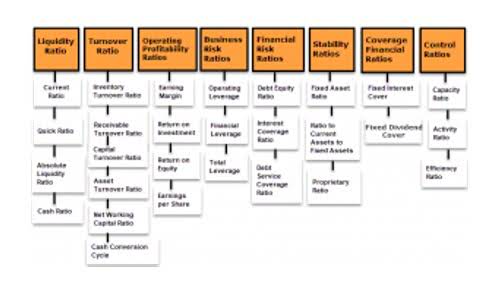The expense amounts are then used as a tax deduction, reducing the tax liability of the business. Accounting depreciation, also known as book depreciation, is a fundamental financial concept that involves allocating the cost of a tangible asset over its useful lifespan. This practice is recognized by accounting standards such as US Generally Accepted Accounting Principles (GAAP) and the International Financial Reporting Standards (IFRS). When recording depreciation on income tax returns, it’s important to follow the IRS guidelines to the letter.
Meanwhile, amortization often does not use this practice, and the same amount of expense is recognized whether the intangible asset is older or newer. Whether it is a company vehicle, goodwill, corporate headquarters, or a patent, that https://www.quick-bookkeeping.net/ asset may provide benefit to the company over time as opposed to just in the period it is acquired. To accurately reflect the use of these assets, the cost of business assets can be expensed each year over the life of the asset.
Recall that determination of the costs to be depreciated requires including all costs that prepare the asset for use by the company. Depreciation is the method the company https://www.kelleysbookkeeping.com/ uses to spread an asset’s cost over its useful life. The cost of assets spreads over the period because of the economic value of the assets reduces due to their usage.
Annual depreciation is derived using the total of the number of years of the asset’s useful life. The SYD depreciation equation is more appropriate than the straight-line calculation if an asset loses value more quickly, or has a greater production capacity, during its earlier years. Depreciation is an accounting practice used to spread the cost of a tangible or physical asset over its useful life. Depreciation represents how much of the asset’s value has been used up in any given time period. Companies depreciate assets for both tax and accounting purposes and have several different methods to choose from.
Everything You Need To Build Your Accounting Skills
Depreciation impacts a business’s income statements and balance sheets, smoothing the short-term impact large investments in capital assets on the business’s books. Businesses large and small employ depreciation, as do individual investors in assets such as rental real estate. A financial advisor is a good source for help understanding how depreciation affects your financial situation. Companies can select any depreciation method to allocate the cost of an asset proportionally. The monthly and yearly expense of depreciation is recorded on the income statement. The accumulated depreciation is recorded on the balance sheet of the company.
Depreciation reduces the value of these assets on a company’s balance sheet. The four depreciation methods include straight-line, declining balance, sum-of-the-years’ digits, and units of production. Depreciation recapture is a provision of the tax law that requires businesses or individuals that make a profit in selling an asset that they have previously depreciated to report it as income. In effect, the amount of money they claimed in depreciation is subtracted from the cost basis they use to determine their gain in the transaction. Recapture can be common in real estate transactions where a property that has been depreciated for tax purposes, such as an apartment building, has gained in value over time.
Accounting Depreciation vs Tax Depreciation
For example, a business may buy or build an office building, and use it for many years. The original office building may be a bit rundown but it still has value. The cost of the building, minus its resale value, is spread out over the predicted life of the building, with a portion of the cost being expensed in each accounting year.
As a side note, there often is a difference in useful lives for assets when following GAAP versus the guidelines for depreciation under federal tax law, as enforced by the Internal Revenue Service (IRS). This difference is not unexpected when you consider that tax law is typically determined by the United States Congress, and there often is an economic reason for tax policy. The company would be able to take an additional $10,000 in depreciation over the extended two-year period, or $5,000 a year, using the straight-line method. Any mischaracterization of asset usage is not proper GAAP and is not proper accrual accounting. We also address some of the terminology used in depreciation determination that you want to familiarize yourself with. Finally, in terms of allocating the costs, there are alternatives that are available to the company.
- For example, vehicles are assets that depreciate much faster in the first few years; therefore, an accelerated depreciation method is often chosen.
- Let’s assume a company ABC purchased manufacturing equipment for $ 200,000.
- For this reason, depreciation is calculated by subtracting the asset’s salvage value or resale value from its original cost.
- Instead of taking the exact percentage, it doubles the reciprocal percentage to accelerate the depreciation cost.
- Finally, in terms of allocating the costs, there are alternatives that are available to the company.
- While you’ve now learned the basic foundation of the major available depreciation methods, there are a few special issues.
A company can use the straight-line depreciation method to evenly distribute an asset’s cost. Thus, this method will also bring consistent tax benefits to the company. Depreciation calculations determine the portion of an asset’s cost that can be deducted in a given year. Or, it may be larger in earlier years and decline annually over the life of the asset.
That means that the same amount is expensed in each period over the asset’s useful life. Assets that are expensed using the amortization method typically don’t have any resale or salvage value. Accounting depreciation is calculated using the GAAP rules, designed to spread out an asset’s cost over its useful life. See how the declining balance method is used in our financial modeling course. Unlike the account Depreciation Expense, the Accumulated Depreciation account is not closed at the end of each year. Instead, the balance in Accumulated Depreciation is carried forward to the next accounting period.
A declining balance depreciation is used when the asset depreciates faster in earlier years. To do so, the accountant picks a factor higher than one; the factor can be 1.5, 2, or more. When a long-term asset is purchased, it should be capitalized instead of being expensed in the accounting period it is purchased in. To avoid doing so, depreciation is used to better match the expense of a long-term asset to periods it offers benefits or to the revenue it generates.
Introduction to Depreciation
GAAP guidelines highlight several separate, allowable methods of depreciation that accounting professionals may use. Businesses have some control over how they depreciate their assets over time. Good small-business accounting software lets you record depreciation, but the process will probably still require manual calculations. You’ll https://www.online-accounting.net/ need to understand the ins and outs to choose the right depreciation method for your business. This method, which is often used in manufacturing, requires an estimate of the total units an asset will produce over its useful life. Depreciation expense is then calculated per year based on the number of units produced that year.
What Is Depreciation? Definition, Types, How to Calculate
But the depreciation charges still reduce a company’s earnings, which is helpful for tax purposes. Quantifying that loss is known as depreciation, which refers to the portion of an asset’s cost that is “consumed,” or transferred from balance sheet to income statement, in a given accounting period. In this way, businesses are attributing a portion of the profits from a physical asset to a portion of its expense. When analyzing depreciation, accountants are required to make a supportable estimate of an asset’s useful life and its salvage value. However, over the depreciable life of the asset, the total depreciation expense taken will be the same, no matter which method the entity chooses. For example, in the current example both straight-line and double-declining-balance depreciation will provide a total depreciation expense of $48,000 over its five-year depreciable life.
For example, Company A purchases a building for $50,000,000, to be used over 25 years, with no residual value. The annual depreciation expense is $2,000,000, which is found by dividing $50,000,000 by 25. The straight-line depreciation method is the most widely used and is also the easiest to calculate. The method takes an equal depreciation expense each year over the useful life of the asset. Finally, depreciation is not intended to reduce the cost of a fixed asset to its market value. Market value may be substantially different, and may even increase over time.



